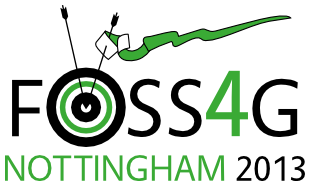Presentation
MapProxy – Past, Present, Future
Oliver Tonnhofer (Omniscale)
10:00 on Saturday 21st September (in Session 48, starting at 9 a.m., EMCC: Room 3)
Show in Timetable
More than three years ago MapProxy started as a small tile cache with the ability to serve regular WMS clients. MapProxy grew from that to a powerful and flexible proxy for maps. Features like the security API, the ability to reproject tiles, support for coverages from Shapefiles or PostGIS and the various tools are just a few things that make MapProxy to stand out. MapProxy is used in countless projects – by federal or state agencies and institutions, by universities, students and hobbyists, by small, national and international companies – all around the world. It is used to combine multiple WMS services to one, make WMS servers available in tiled clients or to restict access to georaphic boundaries. This presentation will show you the most important features that were added to MapProxy in the last years. All features will be explained with practical use cases. Topics: - Cascading WMS: combine multiple heterogeneous WMS services to one, with coverages and unified FeatureInfo - Tiling: create Google Maps/OpenStreetMap compatible tile services from WMS services that do not support the web mercator projection - Tiling: reproject tiles from web mercator to a local projection - Security: give users access to single layers, restricted to user-dependent polygons - Render server: directly integrate MapServer or Mapnik into MapProxy - Tools: calculate scales, estimate the number of tiles, read capabilities, re-seed areas, ... This presentation will also be about the future of MapProxy and the road to version 2.0.
